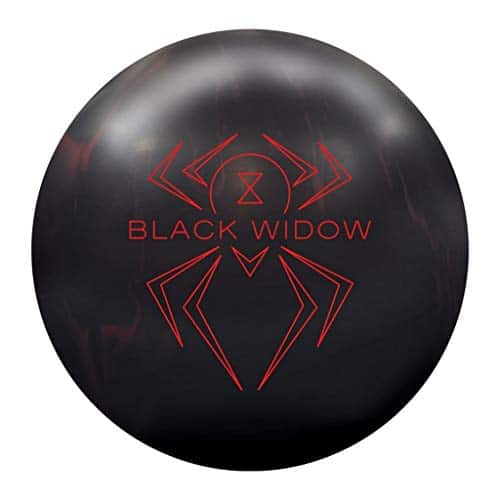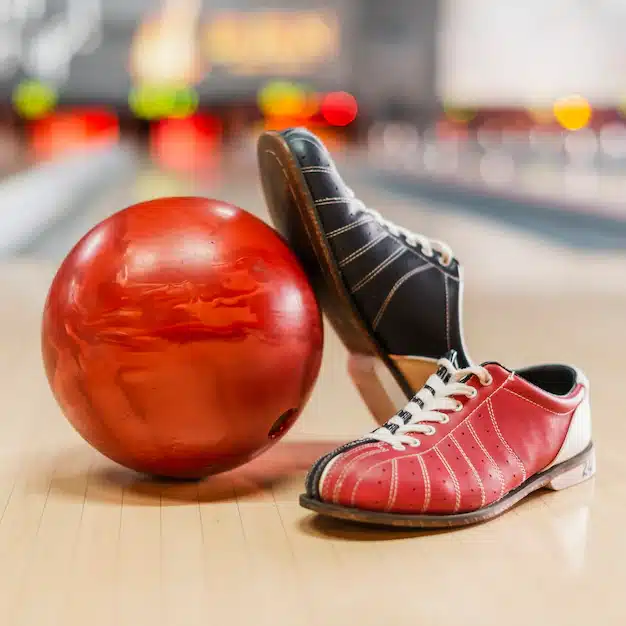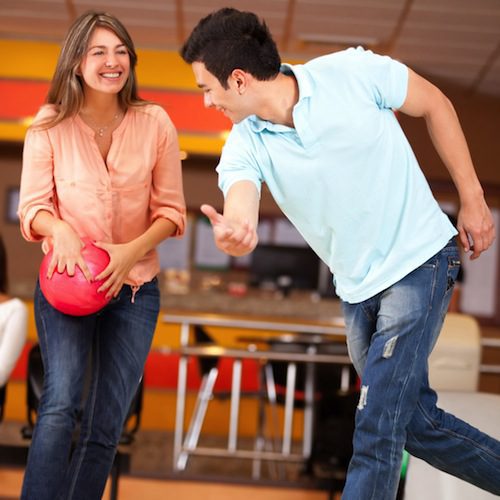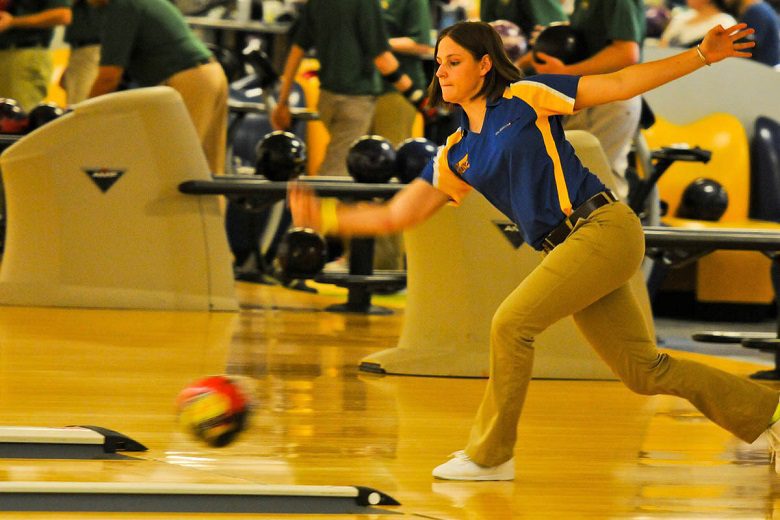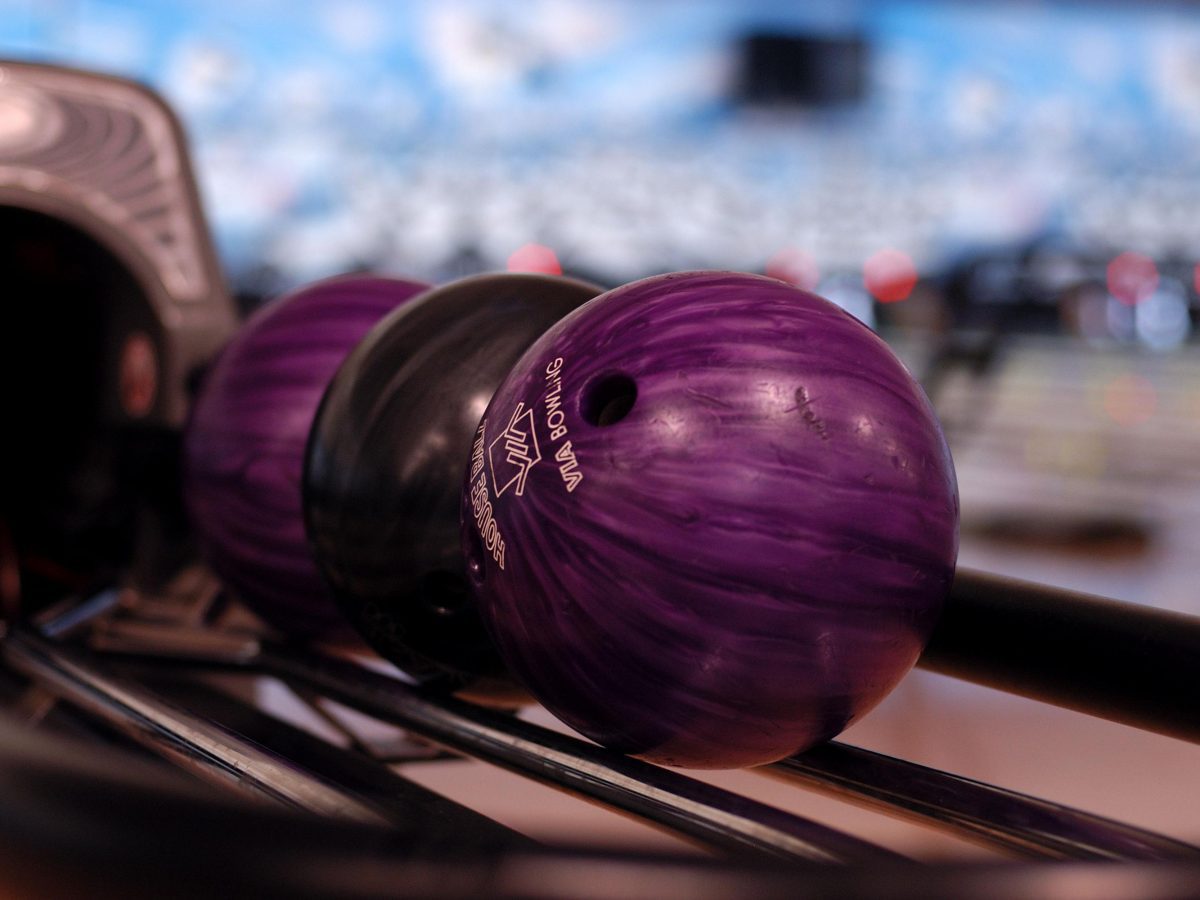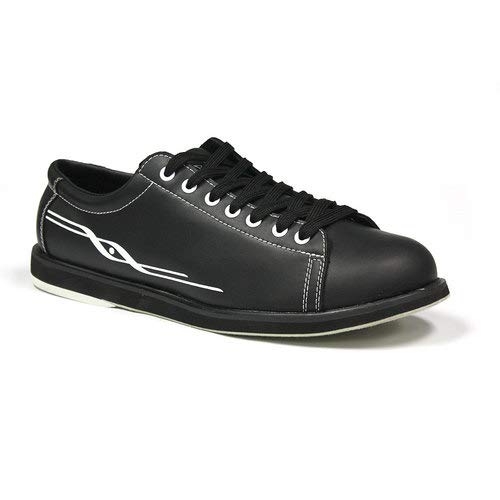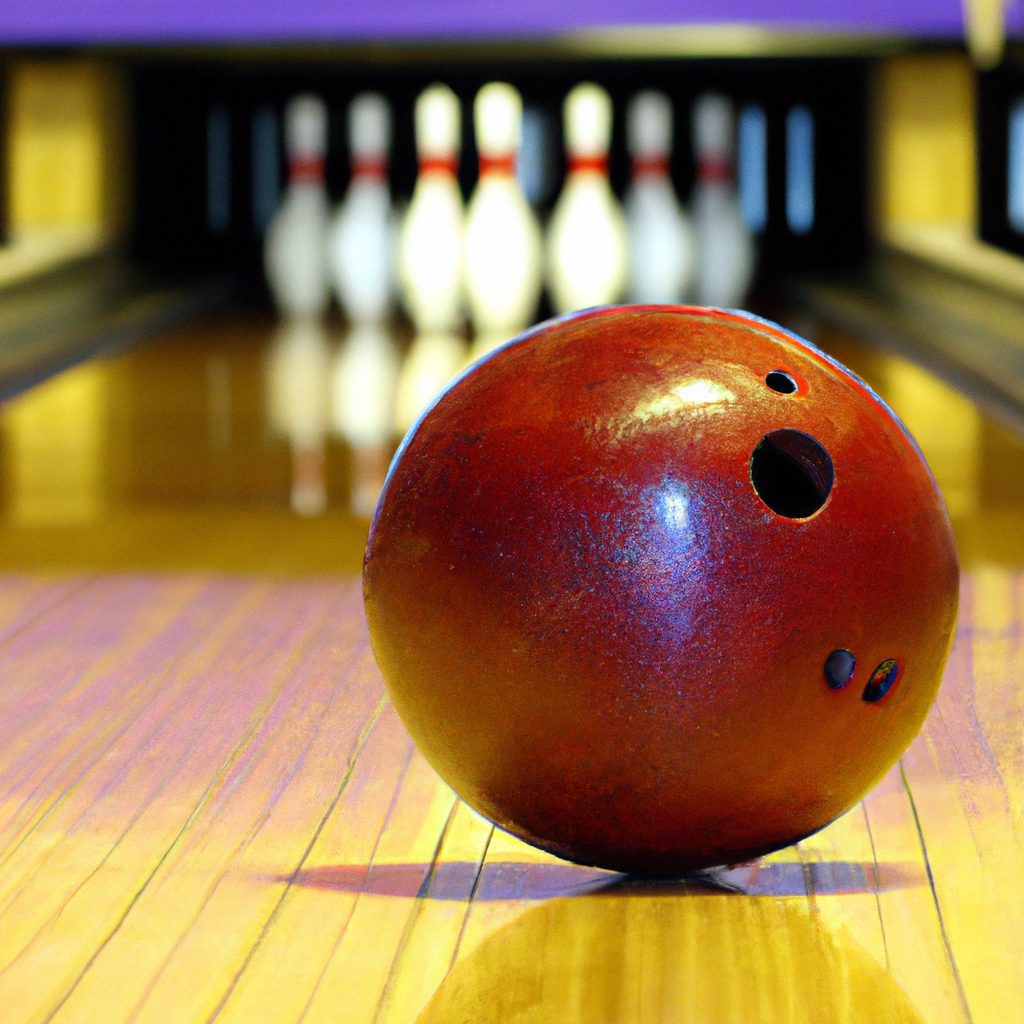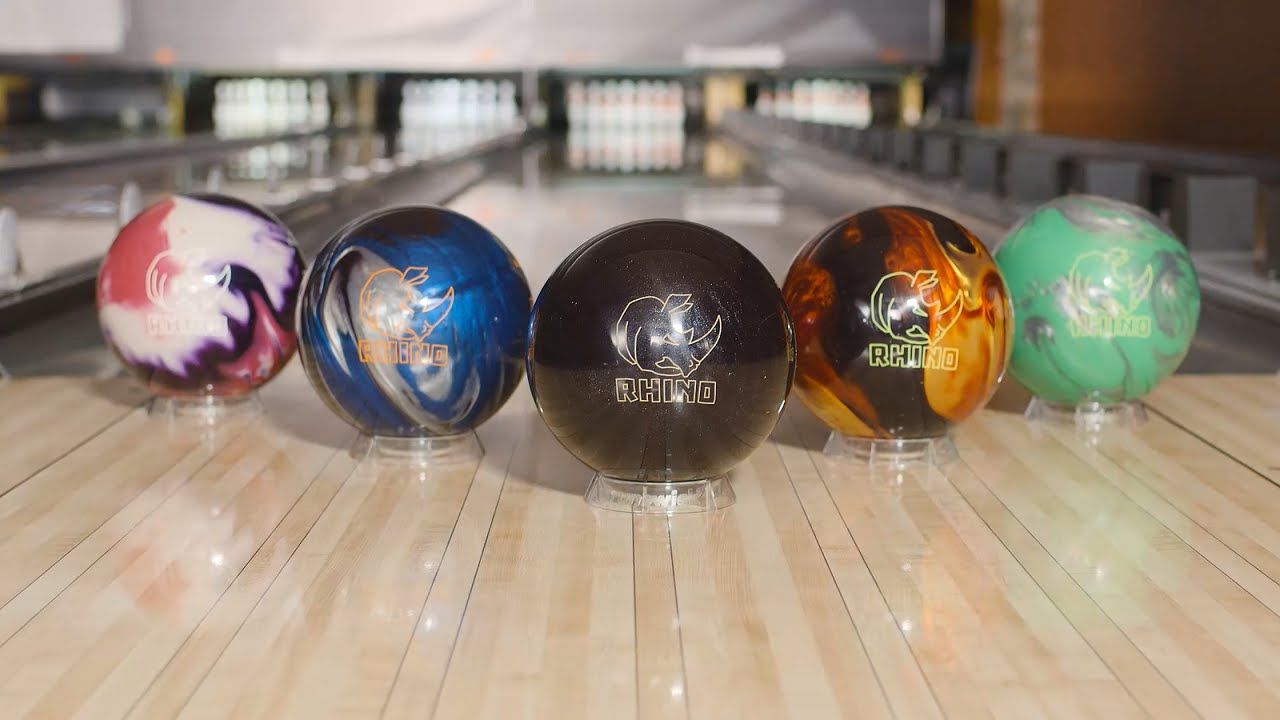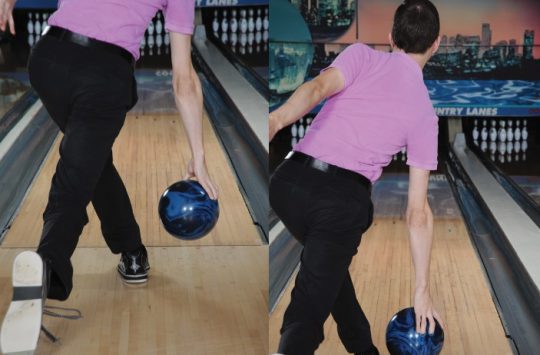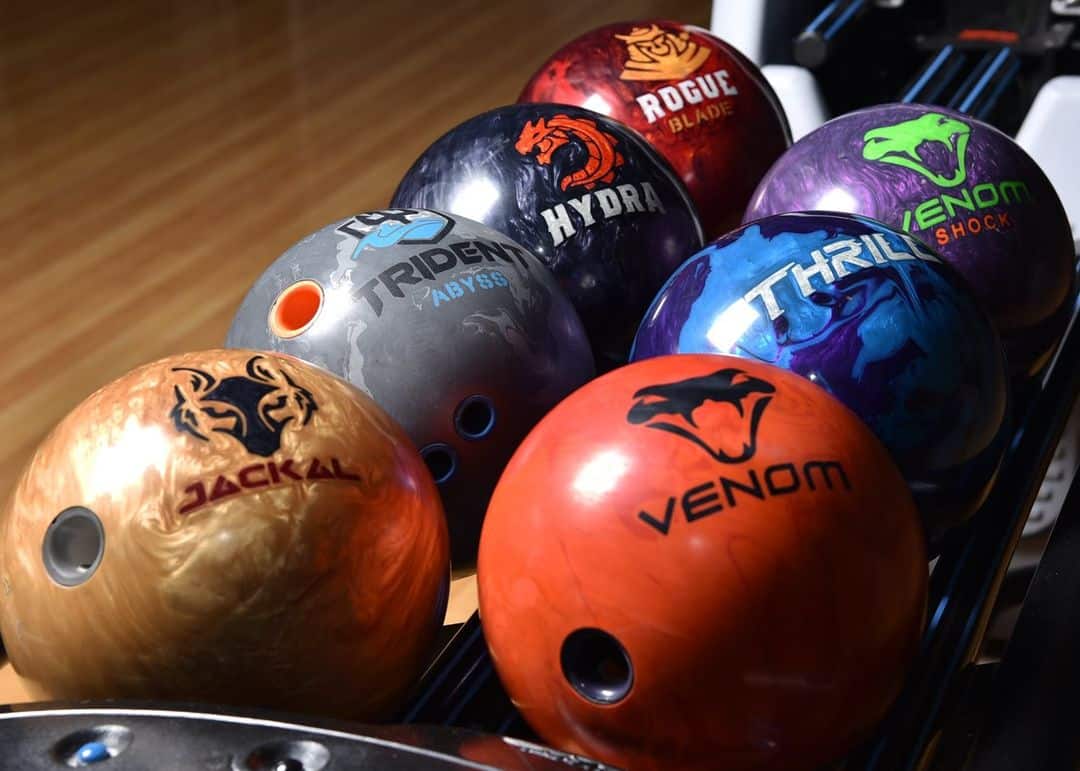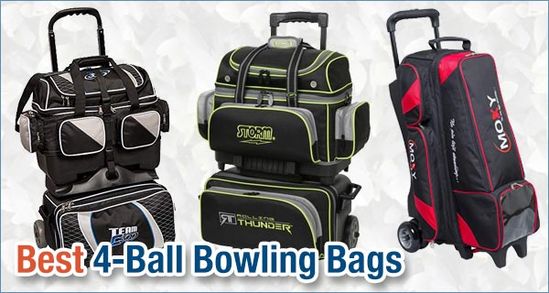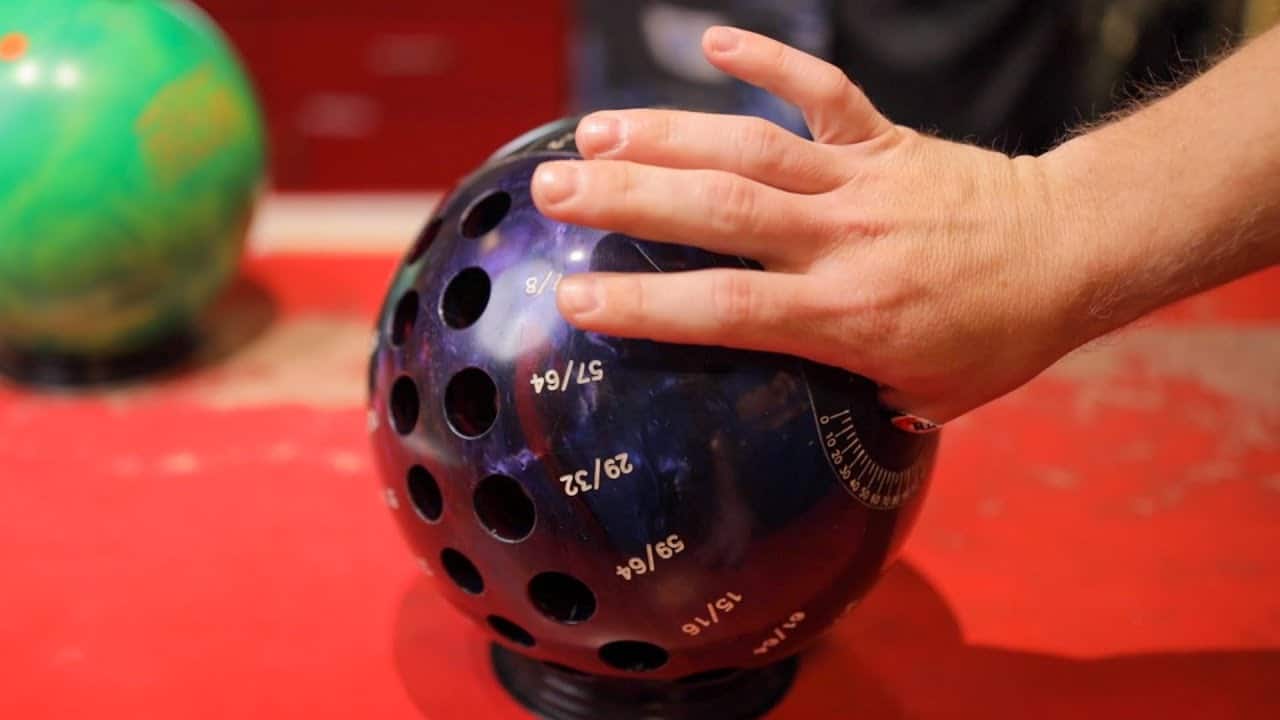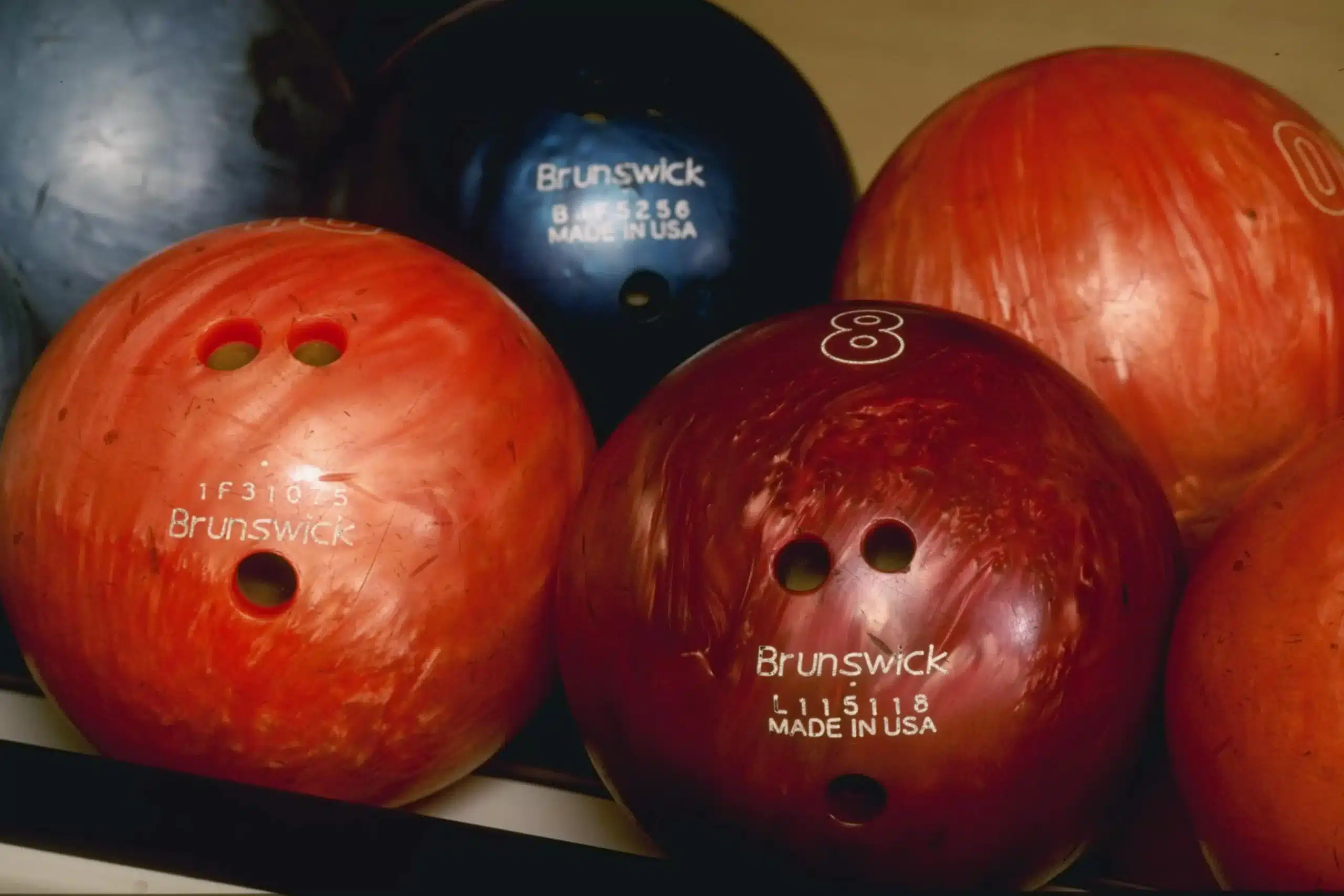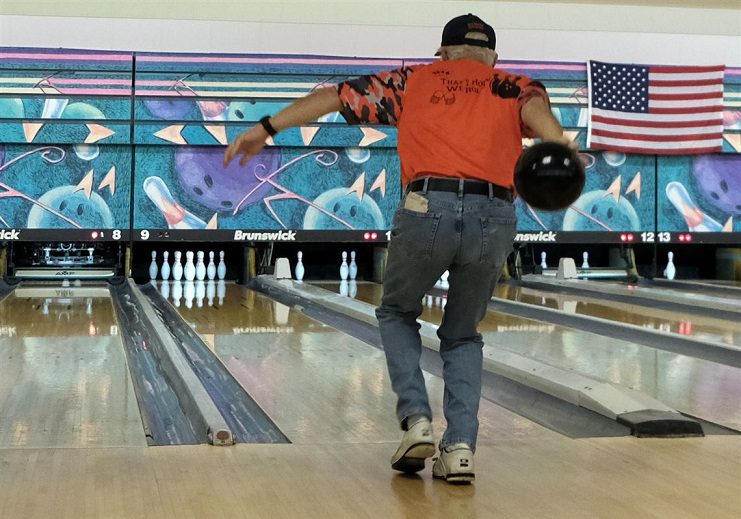When picking the perfect bowling wrist support, we’ve all been there, scratching our heads and wondering where to start. With various options available, each promising to improve our game and prevent injuries, it’s easy to feel overwhelmed. But fear not, fellow bowlers!
In this article, we’ll guide you through the key factors to consider when selecting the proper wrist support, ensuring you make the best choice to enhance your performance and protect your wrist from strain. So, let’s put our minds at ease and bow our way to success!
Review contents
Understanding the Purpose of Bowling Wrist Support
Bowling wrist support is crucial in enhancing our game on the lanes. Whether we are beginners or seasoned bowlers, using the proper wrist support can provide numerous benefits, including improved accuracy, increased control, and reduced risk of injury. Stabilizing our wrists and providing support allows us to consistently release the ball with the desired revolutions and accuracy, resulting in better performance. Understanding the different types of wrist support available and considering various factors can help us choose the right one that matches our needs and bowling style.
The Role of Bowling Wrist Support
The role of bowling wrist support is to provide stability and reinforcement to our wrist, preventing unwanted movements or excessive bending during the ball’s release. It helps maintain a consistent wrist position throughout the delivery, ensuring a smooth and controlled release. This consistency is crucial as it allows us to develop muscle memory and repeatable movements, leading to more accurate shots. Additionally, wrist support can alleviate strain and reduce the risk of injuries, such as wrist sprains or strains, making it an essential accessory for bowlers of all skill levels.
How Bowling Wrist Support Can Improve Your Game
Using the right bowling wrist support can improve our game by enhancing our technique, consistency, and overall performance. Here are some key benefits of incorporating wrist support into our bowling routine:
- Enhanced Accuracy: Wrist support helps stabilize our wrist, enabling us to maintain a more consistent and repeatable release. This stability allows better control of the ball’s path down the lane, improving accuracy and targeting.
- Increased Revolutions: By providing support and reducing excessive wrist movement, wrist support enables us to generate more revolutions on the ball. This enhanced rotation can increase the ball’s hook potential, providing better pin carry and striking power.
- Improved Control: Proper wrist support helps us achieve a controlled and fluid release, reducing the chance of erratic ball motion. With greater control over our shots, we can better adapt to lane conditions and make necessary adjustments, maximizing our scoring potential.
- Injury Prevention: Wrist support assists in preventing injuries by reducing strain on the wrist’s ligaments and tendons. By providing additional support and stabilization, it minimizes the risk of wrist-related injuries during the repetitive motions of bowling.
- Consistent Technique: A consistent wrist position is essential for developing muscle memory and a repeatable bowling technique. Wrist support helps maintain a consistent hand position and release, allowing us to establish a reliable technique over time.
Different Types of Bowling Wrist Support
Various types of wrist support are available in the market, each offering distinct advantages and features. Understanding these options can help us select the most suitable wrist support for our needs. Let’s explore some common types of bowling wrist support:
Basic Wrist Bands
Basic wristbands are the simplest form of wrist support available. They are often made of elastic material and wrap around the wrist, providing minimal support and compression. These bands are ideal for bowlers who only require a slight stability boost or do not want a restrictive feel during their bowling motion. Basic wristbands are also a budget-friendly option for beginners or casual bowlers.
Wrist Wraps
Wrist wraps are a step from basic wristbands, offering additional support and customization options. They typically feature adjustable straps that allow us to fine-tune the tightness and fit according to our preferences. Wrist wraps provide excellent stability, reducing wrist movement during release and improving accuracy. They are suitable for bowlers of varying skill levels and can be easily adjusted to accommodate different bowling styles.
Bowling Gloves
Bowling gloves are a popular choice among bowlers, combining wrist support with overall hand protection and grip enhancement. These gloves feature a wrist strap or support system and a specially designed palm and finger grip. Combining wrist support and enhanced grip can improve control and consistency while reducing the risk of wrist and grip-related injuries. Bowling gloves are available in different styles and materials to accommodate various preferences.
Wrist Supports with Metal Inserts
Wrist supports with metal inserts are a more advanced option for bowlers looking for maximum stability and support. These supports consist of a rigid metal plate or rod that extends along the underside of the wrist. The metal insert restricts wrist movement, ensuring a consistent position during release. While they provide excellent stability, these wrist supports may require adjustment and may not be suitable for all bowlers, particularly those with existing wrist conditions.
When choosing the right type of wrist support, it is crucial to consider several factors that can influence its effectiveness and suitability for our bowling style and personal preferences.
Factors to Consider
Bowling Style and Technique
Our bowling style and technique play a significant role in determining the most appropriate wrist support for us. Bowlers with a more aggressive hook-based approach may benefit from wrist supports offering excellent stability and grip enhancements. Those who prefer a straighter shot might opt for wrist supports with less restriction, allowing for a more natural release. Considering our bowling style and the goals we want to achieve can help us narrow down the options and choose the wrist support that complements our technique.
Injury Prevention and Rehabilitation
Injury prevention and rehabilitation should also be considered when selecting wrist support. If we have previously experienced wrist injuries or are prone to them, wrist supports with more robust stabilization properties may be beneficial. Additionally, bowlers rehabilitating a wrist injury should consult with a healthcare professional or therapist to determine the most suitable type of support for their specific needs. Prioritizing injury prevention and rehabilitation can help us enjoy the game while minimizing the risk of further harm.
Comfort and Fit
Comfort is paramount when choosing wrist support. It should feel comfortable on our wrist, allowing natural hand movements without causing discomfort or restrictions. Proper fit is essential, as loose or ill-fitting support may not provide the desired level of stability, while one that is too tight can restrict circulation or impede our wrist’s natural range of motion. We should consider wrist supports that offer adjustable straps or sizing options to ensure a personalized and comfortable fit.
Materials and Durability
The choice of materials used in wrist support can impact comfort, durability, and overall performance. Common materials include neoprene, spandex, and various synthetic blends. These materials should be soft, breathable, and moisture-wicking to prevent excessive sweat accumulation and discomfort. Durability is also essential, as wrist supports undergo significant stress and repetitive use during bowling. Opting for wrist supports made with high-quality and durable materials can ensure their long-term effectiveness and value.
Consider these factors when choosing the right type of wrist support for our bowling needs. By assessing our bowling style, injury history, comfort requirements, and preferred materials, we can make an informed decision that enhances our game while prioritizing our well-being.
Choosing the Right Type of Wrist Support
Now that we have explored the different types of wrist support available and considered the factors that can influence our decision let’s delve into the specifics of each type to understand their features and benefits.
Basic Wrist Bands
Basic wristbands, as mentioned earlier, are simple elastic bands that provide minimal support. While unsuitable for extensive stabilization, they can be an excellent starting point for beginners or bowlers who prefer a lighter support system. Basic wristbands are versatile and affordable, making them a popular choice among casual bowlers.
Wrist Wraps
Wrist wraps offer more excellent stability and support compared to basic wristbands. They feature adjustable straps that allow us to customize the tightness and fit according to our preferences. Wrist wraps are available in various designs, including those with additional padding or specialized grip enhancements. The customizable nature of wrist wraps ensures a comfortable fit while still providing a substantial level of wrist support for improved performance.
Bowling Gloves
Bowling gloves provide a comprehensive solution combining wrist support, hand protection, and grip enhancement. They typically feature a wrist strap or support system, along with a specially designed palm and finger grip. Bowling gloves are available in different styles, including full-finger and fingerless options, catering to bowlers’ varying preferences. Including wrist support in bowling, gloves ensure consistent wrist positioning while enhancing the grip and reducing the risk of injuries caused by excessive friction between the ball and hand.
Wrist Supports with Metal Inserts
Wrist supports with metal inserts offer the highest level of stability and restriction. They consist of a rigid metal plate or rod that extends along the underside of the wrist, immobilizing it to a certain extent. This restricts the wrist’s movement during release, ensuring a consistent and controlled position. However, wrist supports with metal inserts may feel more restricting and require an adjustment period to acclimate to rigidity. These advanced supports are generally recommended for bowlers seeking maximum stabilization and have the flexibility to adapt to their specific bowling technique.
While understanding the different types of wrist support available is essential, it is equally important to find the right match for our preferred bowling grip. Different grips require varying levels of wrist support and positioning. Let’s explore common bowling grip styles and their corresponding wrist support requirements.
Understanding Different Bowling Grips
Conventional Grip
The conventional grip is one of the most common and straightforward grips used in bowling. In this grip, the fingers are inserted fully into the holes up to the second joint, while the thumb is positioned fully into the thumbhole. The conventional grip generally requires less wrist support, as the wrist remains relatively stable throughout the release. However, some bowlers may use wrist support to enhance stability and alleviate strain during long bowling sessions.
Fingertip Grip
The fingertip grip is widely favored by bowlers looking to generate maximum hook potential and back-end reaction. In this grip, the fingers are inserted only up to the first joint, allowing for a looser grip and increased rev rate. The wrist plays a more significant role in the release with a fingertip grip, requiring more wrist support to maintain consistency and control. The appropriate selection of wrist support is crucial for bowlers using the fingertip grip to ensure a stable and repeatable release.
Semi-Fingertip Grip
The semi-fingertip grip strikes a balance between the conventional and fingertip grips. It involves inserting the fingers up to the second crease, offering a compromise between the two grips’ benefits. The wrist’s involvement in the release is slightly more pronounced than the conventional grip but less than the fingertip grip. Bowlers using the semi-fingertip grip may opt for wrist support with moderate stability and positioning assistance.
Contoured Grip
The contoured grip is a modified version of the fingertip grip, with a slight variation in finger insertion depth. In this grip, the fingertip holes are drilled with a custom contour to match the bowler’s specific finger shape and size. The contoured grip offers a secure fit, reducing unwanted movement and optimizing power transfer to the ball. Depending on individual preferences and the extent of contouring, bowlers using this grip may require wrist support that accommodates the custom fit while providing adequate stability.
Sarge Easter Grip
The Sarge Easter grip is a unique style favored by some bowlers, particularly those seeking a more robust delivery. In this grip, the index and pinky fingers are inserted as in the conventional grip, but the middle and ring fingers are inserted using the fingertip grip method. This grip generates maximum gripping power with increased wrist action during the release. Bowlers using the Sarge Easter grip may benefit from wrist supports that provide substantial stability, minimizing unwanted wrist movement and ensuring consistent release angles.
Understanding the nuances of different bowling grips is crucial when selecting the appropriate wrist support. Let’s explore how to match wrist support to each grip style to maximize performance and maintain comfort.
Matching Wrist Support to Bowling Grip
Wrist Support for Conventional Grip
For bowlers using the conventional grip, wrist support that offers moderate stabilization and minimal restriction may be sufficient. Basic wrist bands or wrist wraps that provide a comfortable fit without limiting wrist movement excessively can help maintain a consistent release position. The primary goal with wrist support for this grip style is to provide some extra support and reduce strain during extended bowling sessions.
Wrist Support for Fingertip Grip
Bowlers using the fingertip grip benefit from wrist support that offers increased stabilization and control. Wrist wraps or gloves with a built-in sturdy wrist strap can provide the necessary stability for this grip style. These supports help minimize excessive wrist movement during the release, improving accuracy and increasing hook potential. Look for wrist support designed for bowlers using the fingertip grip to ensure a proper fit and optimal support.
Wrist Support for Semi-Fingertip Grip
The semi-fingertip grip requires wrist support that balances stability and flexibility. Wrist wraps with adjustable straps provide the versatility to customize the tightness and positioning according to individual preferences. Look for wrist supports that offer moderate support and allow for a moderate range of motion to accommodate the semi-fingertip grip’s characteristics. Experimenting with different levels of support and tightness can help find the ideal match for this grip style.
Wrist Support for Contoured Grip
The contoured grip’s custom fit necessitates wrist support that aligns with the finger contours and provides optimal stability. Custom wrist supports or gloves that offer personalized contouring options can ensure a perfect fit while maintaining proper wrist positioning. These supports should provide adequate stabilization while accommodating the unique finger insertion depths associated with the contoured grip. Seek out wrist supports designed for bowlers using the contoured grip for the best results.
Wrist Support for Sarge Easter Grip
Bowlers employing the Sarge Easter grip require wrist support that delivers substantial stability and constraint during the release. Wrist supports with metal inserts or rigid structures can help immobilize and eliminate excessive wrist movement. These advanced supports minimize the risk of deviation in release angles, ensuring consistency and power throughout the delivery. Bowlers using the Sarge Easter grip may need to acclimate to the rigid nature of these wrist supports to optimize their performance.
Matching our wrist support to our preferred bowling grip is crucial for maintaining stability, consistency, and comfort. By selecting wrist support that aligns with our grip style, we can optimize our performance and reduce the risk of unwanted wrist movements or injuries.
Importance of Comfort and Fit
Comfort and fit are vital considerations when choosing wrist support. Ill-fitting or uncomfortable wrist support can hinder our performance and even cause distractions during our bowling sessions. Here are some factors to keep in mind when evaluating the comfort and fit of wrist support:
Finding the Right Size
Wrist support comes in various sizes to ensure a comfortable fit for different individuals. It is essential to determine our wrist size accurately by measuring the circumference of our wrist using a measuring tape or following the manufacturer’s sizing guidelines. Selecting the appropriate size ensures a snug fit that is neither loose nor tight, allowing optimal support and range of motion.
Adjustability and Customization Options
Wrist support with adjustable straps or customization options provides the flexibility to fine-tune the fit according to our preferences. Straps that can be tightened or loosened allow us to achieve the desired level of support and tightness. Customizable wrist supports, such as those with removable inserts or contouring options, enable us to achieve a personalized fit that caters to the unique shape of our wrist and hand.
Testing the Support for Comfort
Before making a final decision, it is crucial to test the wrist support for comfort, preferably by simulating bowling motions. Pay attention to areas that may cause discomfort, restrict movement, or rub against the skin. Ensure that the wrist support does not impede blood circulation or cause pain or numbness during extended use. By thoroughly testing the support beforehand, we can avoid purchasing wrist support that may interfere with our game or become a source of discomfort.
Prioritizing comfort and fit when selecting wrist support is essential for maintaining focus and maximizing performance during bowling sessions. Comfortable and well-fitted wrist support contributes to a seamless and distraction-free lane experience.
Materials and Durability
The choice of materials used in wrist support affects comfort, durability, and overall performance. Understanding the materials commonly used and considering durability factors can help us select wrist support that meets our needs. Let’s explore some critical considerations regarding materials and durability:
Common Materials Used in Bowling Wrist Support
Bowling wrist supports are made from a variety of materials, each with its unique properties and advantages. Common materials include neoprene, spandex, elastic, and synthetic blends. Neoprene is a popular choice due to its elasticity, breathability, and moisture-wicking properties. Spandex and elastic materials offer flexibility and a comfortable fit, while synthetic blends offer excellent durability and resistance to wear and tear. When evaluating wrist supports, factor in the materials used and consider their suitability for our preferences, climate, and potential skin sensitivities.
Durability Considerations
Durability is an essential aspect to consider when investing in wrist support. Bowling wrist supports are subjected to repetitive use and significant stress during bowling sessions, so it is crucial to choose a support that can withstand such demands. Assess the construction and stitching of the wrist support, ensuring that it is built to last. Reinforced seams and high-quality materials provide durable wrist support that will endure wear and tear over time.
Maintenance and Cleaning Tips
Proper maintenance and cleaning can extend the lifespan of our wrist support. While each wrist support may have specific care instructions the manufacturer provides, some general tips apply. Regularly wipe down the wrist support to remove any sweat or debris that can accumulate during bowling sessions. Avoid exposing the wrist support to excessive heat or direct sunlight to prevent material degradation. If the wrist support is machine washable, follow the manufacturer’s guidelines for cleaning and avoid using harsh detergents or bleach. Proper maintenance ensures that our wrist support remains in good condition, maintaining its effectiveness and longevity.
Considering materials and durability factors helps us decide when selecting wrist support. Opting for wrist supports made from high-quality materials and designed with durability ensures a reliable and long-lasting accessory for our bowling needs.
Consulting with Experts and Peers
Seeking guidance from professional bowlers, joining bowling communities and forums, or consulting with a coach or trainer can provide valuable insights and recommendations when choosing wrist support. Here are some ways to benefit from expert and peer advice:
Seeking Advice From Professional Bowlers
Professional bowlers have extensive experience and expertise in the game. They can offer valuable insights into wrist support and guide us toward models and brands that align with our goals and bowling style. Attending professional bowling events, watching interviews with experienced bowlers, or contacting them through social media platforms can provide opportunities for seeking advice and recommendations.
Joining Bowling Communities and Forums
Bowling communities and forums are excellent sources of information and a platform for discussing topics related to the sport. Participating in these communities allows us to connect with fellow bowlers, learn from their experiences, and gather recommendations for wrist support. Engaging in discussions, asking pertinent questions, and sharing insights can unlock knowledge and help us make informed decisions.
Consulting with a Coach or Trainer
Coaches and trainers possess a deep understanding of bowling techniques and the impact of accessories like wrist support. Seeking their guidance can help us gain insights into our needs and goals. Coaches and trainers can evaluate our bowling style, grip, and technique and provide professional recommendations for selecting the most appropriate wrist support. Their expertise can contribute significantly to our overall improvement and enjoyment of the game.
By consulting with experts and peers, we tap into a wealth of knowledge and experiences that can guide us in making the best choices regarding wrist support. Their recommendations and insights can help us navigate the vast array of options and find the wrist support that aligns with our unique preferences and requirements.
Balancing Cost and Quality
When choosing wrist support, it is essential to balance cost and quality. While budget considerations are valid, choosing the cheapest option without considering quality may lead to subpar performance or potential discomfort. Here are some strategies to balance cost and quality effectively:
Establishing a Budget
Establishing a budget is the first step in managing costs when purchasing wrist support. Determine the maximum amount we will spend based on our financial capacity and priorities. Having a budget in mind helps us narrow down the available options and focus on models that fall within our price range.
Researching Available Options
Researching the available options helps evaluate the wrist support’s quality and features and its cost. Compare different brands, models, and customer reviews to gauge the overall value each option provides. Look for feedback from other bowlers who have used the wrist supports we are considering to gain insights into their effectiveness and durability. A thorough research phase enables us to make an informed decision that suits our budget while ensuring an acceptable level of quality.
Considering Long-Term Investment
Long-term investment should be considered when evaluating the cost of wrist support. High-quality wrist support may have a higher upfront cost, but it can provide better durability and performance over an extended period. Considering the wrist support’s expected lifespan and cost per use can help justify investing in a more durable and reliable option. While upfront costs may be higher, the long-term value and performance can outweigh the initial investment.
By balancing cost and quality, we can find wrist support that meets our requirements without compromising our financial constraints. Prioritizing quality within our budget ensures a satisfactory performance without overspending.
Trying Before Buying
To ensure the wrist support meets our expectations and individual needs, trying it before making a purchase is a valuable step. Here are some ways to test the wrist support and make an informed decision:
Visiting a Pro Shop
Visiting a pro shop offers the opportunity to try different wrist supports physically. Pro shops often allow customers to test wrist supports, providing insights into their fit, comfort, and overall performance. Take the time to try on different models, experiment with adjustments, and simulate bowling motions. Visiting a pro shop allows us to assess how the wrist support feels and decide if it meets our expectations.
Taking Advantage of Trial Offers
Some manufacturers or retailers offer trial periods or satisfaction guarantees for their wrist supports. Taking advantage of these offers allows us to use the wrist support during a trial period before committing to a purchase. During this time, please pay attention to how the wrist support performs, its comfort over extended use, and any potential issues that may arise. Trial offers create an opportunity to evaluate wrist support within our bowling environment truly.
Seeking Recommendations from Experienced Bowlers
Experienced bowlers can provide valuable firsthand insights into different wrist supports. Seek recommendations from bowlers who have used wrist supports similar to the ones we are considering. Ask about their experiences, including comfort, fit, durability, and overall satisfaction. These recommendations can guide decision-making and offer a glimpse into the real-world performance of various wrist supports.
By trying wrist supports before buying, we gain confidence in our selection and minimize the risk of purchasing a support that does not meet our expectations. The ability to test the support and gather reliable feedback ensures a suitable choice that enhances our bowling experience.
In conclusion, choosing the right bowling wrist support is essential for improving our game, reducing the risk of injury, and maintaining comfort. By understanding the role of wrist support, considering factors such as bowling style, grip, comfort, materials, and durability, and seeking guidance from experts and peers, we can make an informed decision.
Striking a balance between cost and quality, trying the wrist support before purchase, and evaluating its performance can ensure that we select the wrist support that best suits our individual needs. With the proper wrist support, we can enhance our performance on the lanes and enjoy the game to the fullest.




![Spare bowling ball Top 10 in 2024. (reviews) Top 10 Best Spare Bowling Balls [2021 Reviewed]](http://landofbowling.com/wp-content/uploads/2021/07/Top-10-Best-Spare-Bowling-Balls-2021-Reviewed.jpg)






